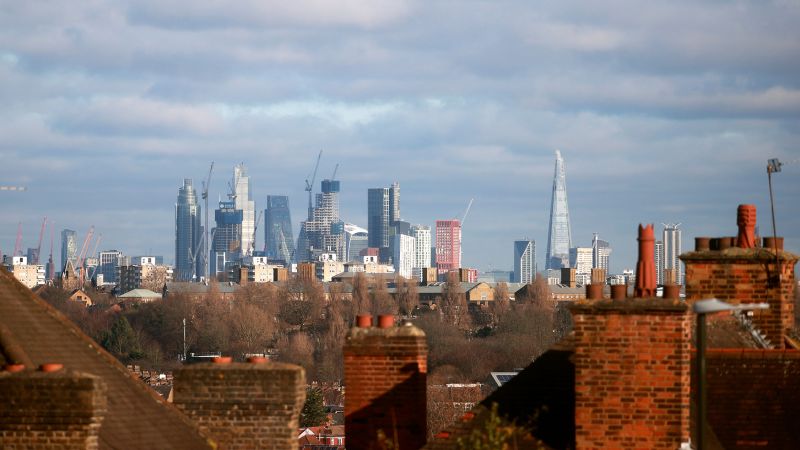Removing the fictional "owner equivalent rent" (OER) from price indexes reveals that inflation has decreased more than reported, with the year-over-year inflation rate falling from 3.2% to 1.5% and the personal-consumption expenditures price index declining from 3% to 2.2%.
Mortgage rates have reached a 22-year high and are expected to continue rising, which will further challenge affordability and slow home sales. Additionally, the high rates are increasing the number of all-cash buyers in the housing market. On the other hand, rents have decreased for a third consecutive month, providing some relief for renters.
Minneapolis has successfully managed to tame inflation by focusing on reducing housing costs through zoning reforms and rental assistance, serving as an example for other cities to follow.
The Federal Reserve may be the cause of rising housing prices and the low supply of existing homes, which could lead to increased inflation and concerns about the Fed's response to the cost of living. Lowering interest rates and unlocking the supply of homes could help alleviate the issue.
Apartment rents in the U.S. are cooling off and are expected to turn negative compared to last year due to high supply of new units and increased options for renters, while high mortgage rates, home prices, and tight supply keep more people in the rental market.
The United States is experiencing inflationary pressures due to rising home prices and rental costs, posing challenges for homebuyers and renters, and potentially leading to broader increases in related services and inflation in other categories. Fed regulators are expecting deflationary trends in the future, but the interaction between housing data and the broader economy is crucial. The imbalance between supply and demand in the housing market needs to be addressed for prices to stabilize.
Manhattan renters may have reached their affordability threshold as median rents remain at a record high, leading to a decline in new leases and longer periods on the market, while landlords are hesitant to increase rents further; however, prices are unlikely to decrease significantly due to falling inventory levels and high demand.
Miami and South Florida have experienced the highest increase in consumer prices among large U.S. urban areas, driven largely by the housing market, with home rents increasing by 15.3% and the cost of buying a home rising by 14.3%.
Landlords are offering incentives to attract renters in the US housing market, even though the median asking rent is at a near-record high, with some landlords providing one-time discounts or a few months free to renters, which effectively lowers rents in certain areas, although this may not be reflected in asking-rent data. The rental vacancy rate has increased, leading to more vacancies for landlords to fill, and landlords are raising rents for existing tenants but not new tenants, in order to maintain high asking rents while strengthening returns. Demand for higher-end properties is declining, while more affordable units are in demand. The rental market varies across regions, with the West and South experiencing decreases in median asking rent, while the Midwest and Northeast have seen increases.
The U.S. housing market is facing a shortage of homes, which is driving up prices and making it difficult for buyers to find affordable options, and the problem may get worse as builders become less confident and hesitant to construct new homes due to high mortgage rates and construction costs.
Home prices in Tokyo and Zurich are considered to be in bubble territory, and two US cities, Miami and Los Angeles, are overvalued, due to the impact of rising interest rates on housing markets worldwide. Other cities at risk of declines include Tel Aviv, Munich, Hong Kong, Geneva, and Frankfurt, where prices relative to rent values have become too extended.
Wage-sensitive inflation in non-housing services has been easing, while wage-insensitive inflation remains volatile and difficult to interpret, according to the Council of Economic Advisers (CEA). Housing inflation continues to be a significant contributor to excess inflation, but it is expected to gradually fall in the coming months.
Inflation is impacting Americans across the country, with the Miami-Fort Lauderdale-West Palm Beach metro area experiencing the highest increase in consumer prices at 7.8%, followed by Denver, Atlanta, Seattle, and Detroit, according to WalletHub. Housing prices are a major driver of high inflation in cities like Miami, and while experts anticipate a gradual cool-down of prices, patience is needed.
A shortage of luxury apartments in Manhattan is driving up prices at the top of the market, with the supply of luxury apartments dropping 24% and prices remaining strong, as high-end buyers are less affected by rising mortgage rates and take advantage of attractive prices during a lack of new development sales.
The cost of living in major U.S. cities exceeds the mean annual wage, highlighting the financial challenges faced by many households and the prevalence of poverty in the country.
Many young Americans are concerned about the difficulty of purchasing a home due to the high cost of real estate and stagnant salaries, particularly in cities experiencing intense gentrification, with Los Angeles, California seeing the largest increase in housing prices at 23.8% since September 2022, followed by San Diego, California and Richmond, California.
The U.S. housing shortage has worsened in suburbs and small towns, according to a report by nonprofit Up for Growth, which found a housing deficit of 3.9 million homes in 2021, representing a 3% increase from 2019, as the shortage spreads from coastal and urban areas to outlying regions.
One in three households in New York City spend at least half their income on rent, while 55% spend about a third of their earnings on rent, leading to an ongoing affordable housing crisis and high levels of rent burden.
Rent prices in Austin, Texas have decreased by more than 14% in the past year, making it the U.S. city with the largest decline, attributed to increased vacancy rates and favorable market conditions for renters.
